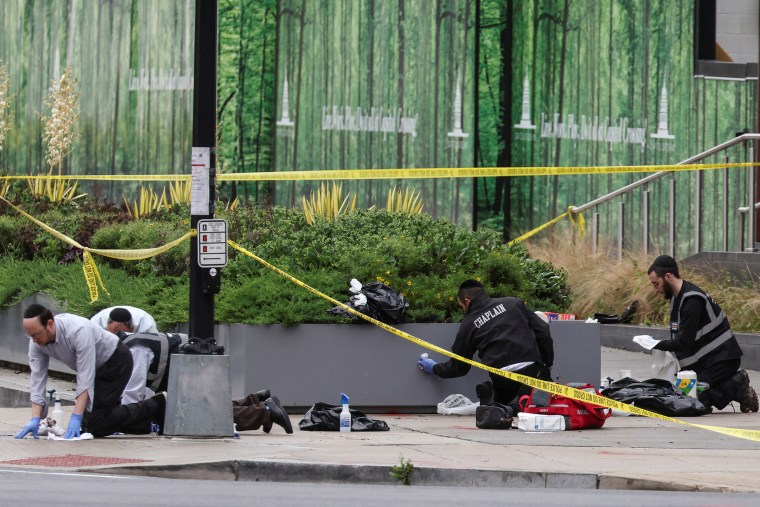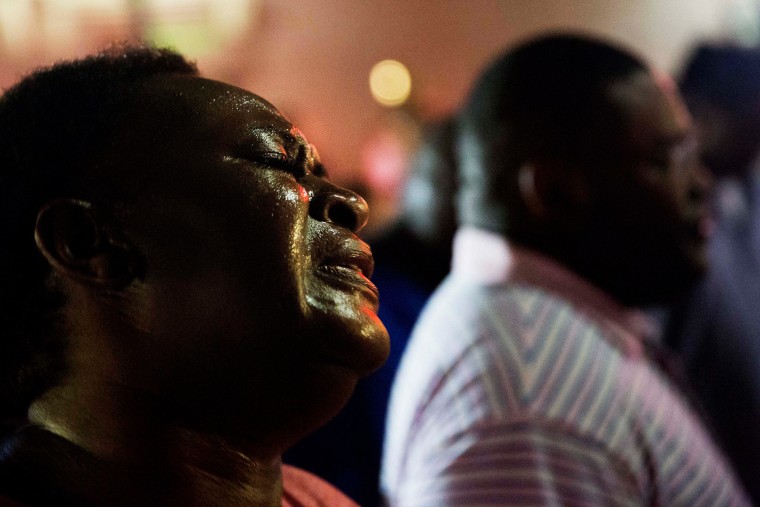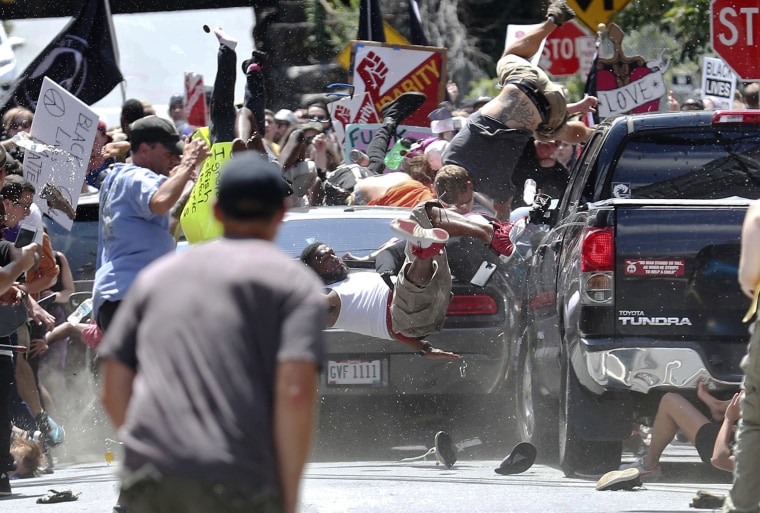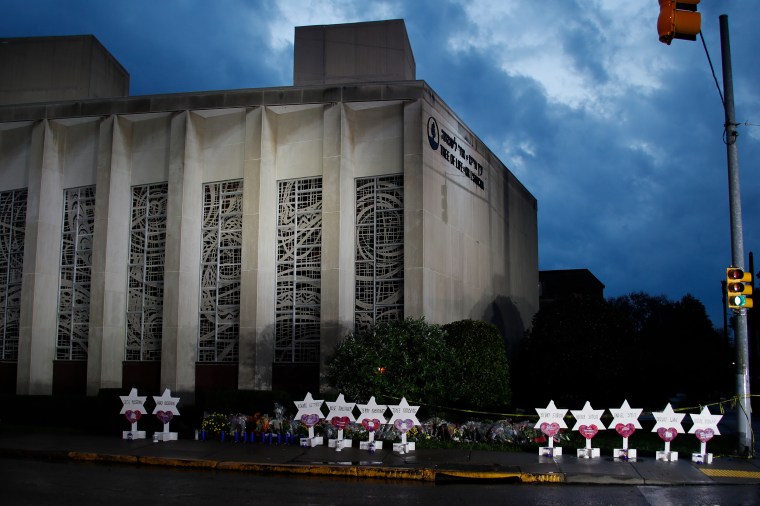On a darkened sidewalk outside the Capital Jewish Museum, he walked past the young couple, then shot them both point-blank in the back. When the woman tried to crawl away, an FBI affidavit says, he reloaded his weapon and fired at her again and again.
“Free Palestine,” the man shouted after walking into the building and waiting to be arrested by police.
The brutal killing of two Israeli Embassy staffers in downtown Washington on Wednesday night raises the kind of question that haunts law enforcement officials and experts.
Of all the people seething with anger on the far left and the far right over hot-button political and social issues, who among them will move from anger to violence?
“It’s virtually impossible” to identify them, said Gregg McCrary, a former FBI profiler. “It’s not trying to find the needle in the haystack. It’s trying to find which piece of hay is going to become a needle.”

In recent months, the U.S. has seen a spate of politically motivated, lone wolf attacks — the hardest kind for law enforcement to prevent — and they come as the Trump administration is shifting resources away from focusing on domestic extremism.
While a large majority of domestic terror attacks and plots in the U.S. over the last 20 years were fueled by right-wing ideologies, recent high-profile violence from people fueled by left-wing ideologies underscores how volatile the U.S. is today.
“I think there has been an increased acceptance in the use of violence against people that we call our enemies,” said Jon Lewis, a research fellow at the Program on Extremism at George Washington University. “And I think that cuts both ways.”
The suspect, Elias Rodriguez, 31, of Chicago, was charged with first-degree murder Thursday in the killing of Sarah Milgrim, 26, and her boyfriend, Yaron Lischinsky, 30, after an American Jewish Committee event. According to the FBI affidavit, Rodriguez told officers at the scene he “did it for Gaza.”
Rodriguez did not enter a plea during a brief court hearing Thursday.

Dr. Park Dietz, a forensic psychiatrist who has consulted for the FBI for decades, said he believes the factors driving attacks like the one in Washington include the bitter political polarization as well as the dark corners of the internet where “people find support for any ludicrous and extreme position from similarly situated angry people.”
The animating issues for the left include Israel’s killing of innocent Palestinians in Gaza and the Trump administration’s deporting of migrants without due process. On the right, the issues include pro-Palestinian protests on college campuses and what they consider “woke” ideology.
“The risks are higher today because of the polarization of so many parts of the population, and because of the rise of grievance-fueled violence of several kinds,” added Dietz, who runs a California-based company, the Threat Assessment Group, dedicated to preventing workplace violence. “It comes from both the left and the right. It’s not the monopoly of any one political position.”
Law enforcement experts say it’s maddeningly difficult to prevent attacks carried out by lone individuals who are not on the radar of authorities and don’t signal their plans. Authorities said that Rodriguez had no previous criminal record and was not being monitored by police or the FBI.
And that job has gotten harder because of changes made to the FBI and Justice Department in the first few months of the Trump administration, according to more than a dozen current and former law enforcement officials who’ve spoken with NBC News.
Dozens of employees have been transferred out of the FBI’s Domestic Terrorism Operations Section, three sources told NBC News, with one person describing the unit as a “ghost town.”
John W. Sullivan III, who was a senior FBI official until he resigned from the bureau in early spring after 17 years, said that the FBI’s shift away from domestic terror threats under Director Kash Patel has led to frustration and serious security concerns.
“There’s a lot of confusion and frustration inside the organization about how much less safe we are being made by defocusing on certain threats, in particular, domestic terrorism,” said Sullivan, who is now running for Congress in New York as a Democrat.
In a statement, the bureau said that the FBI “continuously analyzes the threat landscape and allocates resources and personnel in alignment with that analysis and the investigative needs of the Bureau.”
“We make adjustments and changes based on many factors and remain flexible as various needs arise,” the bureau said. “The FBI’s role in and dedication to investigating terrorism, both domestically and internationally, has not changed.”
Over the past decade, white supremacists and other right-wing extremists were responsible for many significant acts of violence in the U.S. These include:
- The killing of nine Black worshippers at a church in Charleston, South Carolina, in 2015.

- The 2017 car-ramming of counterprotesters at a “Unite the Right” rally in Charlottesville, Virginia, that killed one person and injured 28.

- The killing of 11 Jewish worshippers at a Pittsburgh synagogue in 2018.

- The assault on the U.S. Capitol in 2021.
According to the Anti-Defamation League, right-wing ideologies have fueled more than 70% of the extremist attacks and domestic terror plots in the U.S. since 2002.
But over the past 18 months, the U.S. has seen a string of high-profile attacks fueled at least in part by left-wing ideologies.
Among the most notable examples is the attempt on Trump’s life in August 2024. Prosecutors say the man who was charged with attempting to kill Trump at his Florida golf course wrote letters denouncing the then-presidential candidate.
Perhaps most striking was the killing of UnitedHealthcare CEO Brian Thompson in New York City in December.
Prosecutors say the man charged with the crime, Luigi Mangione, 27, was motivated by animus toward health insurance companies. The killing became a rallying point in some left-wing spaces that have glorified and celebrated such violence, and in some instances called for more. Mangione has pleaded not guilty to federal and state charges.
Podcasters on the left and right and social media platforms have proliferated in recent years, and so has hate speech directed at Jews from both sides, as well as at Muslims, experts say.
Oren Segal, the Anti-Defamation League’s senior vice president for counterextremism and intelligence, noted that the uber-popular podcaster Joe Rogan has recently hosted antisemitic conspiracy theorists. (Challenged by another guest on his show about that, Rogan said: ”I didn’t bring him on for that purpose. I brought him on because I want to find out, like, how does one get involved in the whole conspiracy theory business? Because his whole thing is just conspiracies.”)
Segal said: “It’s no surprise that words animate violence, and the demonization of Israelis and Jews, along with the constant glorification of terrorist organizations, has created the environment that we’re in, making such tragedies like yesterday more likely.”
And for the radicalized who are tired of living in obscurity, carrying out an attack is a guaranteed way to gain attention.
“Fame is difficult to achieve,” said McCrary, the former FBI profiler. “Infamy is just a trigger pull away.”